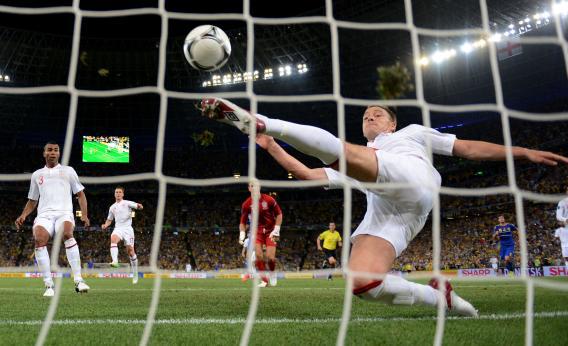Score one for the machines. Soccer’s international governing body has approved the use of two goal-line technology systems in upcoming competitions, including the 2014 World Cup.
One of the systems, called Hawk-Eye, uses multiple high-speed video cameras to triangulate the ball’s position. The other, GoalRef, puts a chip in the soccer ball and uses a magnetic field to detect when it crosses the goal line. Both have performed well in tests. Which one will actually be used in the World Cup remains to be determined. One will also likely be adopted by the English Premier League next year
It’s no surprise that the technology works. Humans are better than computers at a lot of things, but judging whether a fast-flying projectile has crossed a line is not one of them.
The bigger obstacle, as always, has been comfort and trust. Before they’d consider handing the keys to the machines, officials demanded that they prove 100 percent accurate in trials—something no one could expect of human referees. The goal bots also had to render their decisions within a matter of seconds, to avoid slowing the game.
What tipped the scales in technology’s favor was a series of highly publicized cases of egregious human error. Perhaps the most notable was a Frank Lampard goal for England against Germany in the 2010 World Cup that referees denied, even though replays showed the ball bounced well past the line. (The bad goal-line calls did even out for England in Euro 2012.) It was hardly the first such instance, but it was one in which national pride was at stake, on the world’s largest athletic stage.
Soccer follows cricket and tennis in adopting Hawk-Eye-style cameras. The system has been criticized in a few cases for decisions that appeared to contradict what people could see on video replays, and in other instances for decisions that fell within the technology’s margin of error of 3.6 millimeters. That won’t be as much of an issue in soccer as it is in tennis. After all, a soccer ball is pretty huge.
Sports fans, what refereeing job should we take away from humans next?
